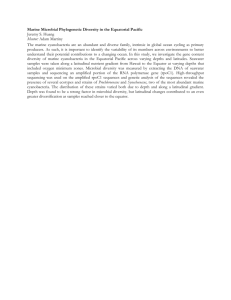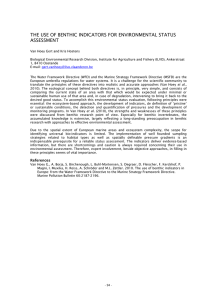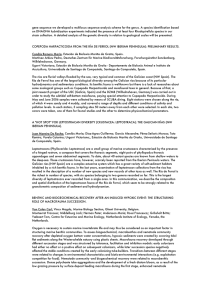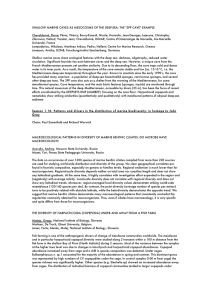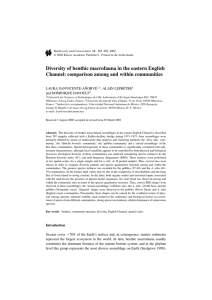Document 10901283
advertisement
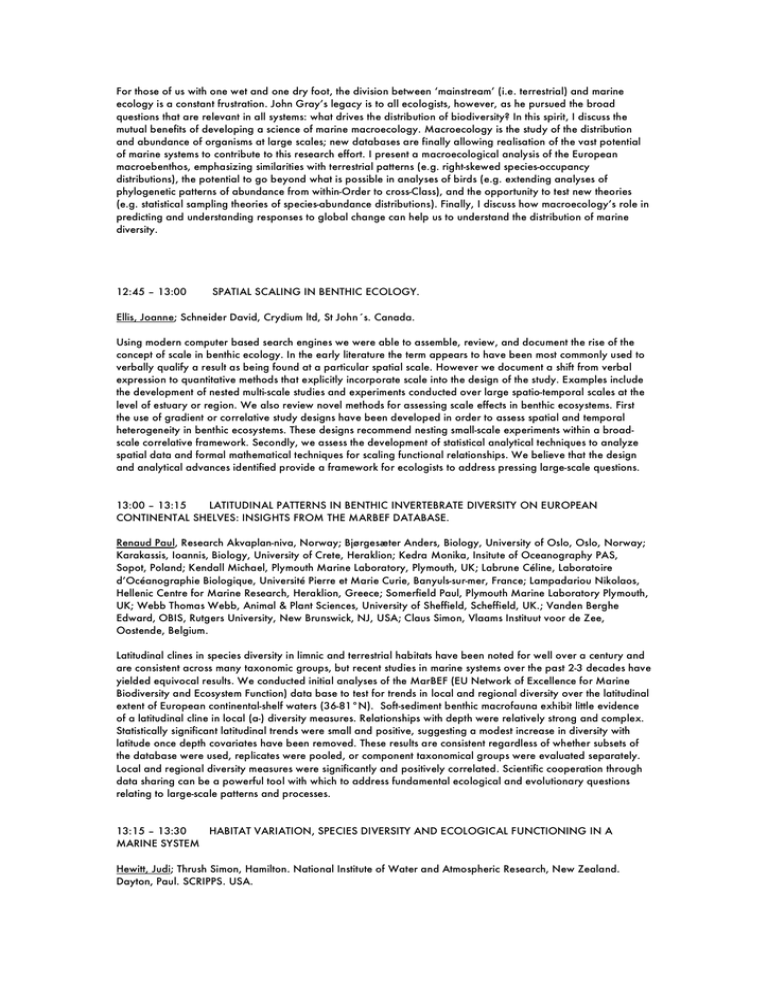
For those of us with one wet and one dry foot, the division between ‘mainstream’ (i.e. terrestrial) and marine ecology is a constant frustration. John Gray’s legacy is to all ecologists, however, as he pursued the broad questions that are relevant in all systems: what drives the distribution of biodiversity? In this spirit, I discuss the mutual benefits of developing a science of marine macroecology. Macroecology is the study of the distribution and abundance of organisms at large scales; new databases are finally allowing realisation of the vast potential of marine systems to contribute to this research effort. I present a macroecological analysis of the European macroebenthos, emphasizing similarities with terrestrial patterns (e.g. right-skewed species-occupancy distributions), the potential to go beyond what is possible in analyses of birds (e.g. extending analyses of phylogenetic patterns of abundance from within-Order to cross-Class), and the opportunity to test new theories (e.g. statistical sampling theories of species-abundance distributions). Finally, I discuss how macroecology’s role in predicting and understanding responses to global change can help us to understand the distribution of marine diversity. 12:45 – 13:00 SPATIAL SCALING IN BENTHIC ECOLOGY. Ellis, Joanne; Schneider David, Crydium ltd, St John´s. Canada. Using modern computer based search engines we were able to assemble, review, and document the rise of the concept of scale in benthic ecology. In the early literature the term appears to have been most commonly used to verbally qualify a result as being found at a particular spatial scale. However we document a shift from verbal expression to quantitative methods that explicitly incorporate scale into the design of the study. Examples include the development of nested multi-scale studies and experiments conducted over large spatio-temporal scales at the level of estuary or region. We also review novel methods for assessing scale effects in benthic ecosystems. First the use of gradient or correlative study designs have been developed in order to assess spatial and temporal heterogeneity in benthic ecosystems. These designs recommend nesting small-scale experiments within a broadscale correlative framework. Secondly, we assess the development of statistical analytical techniques to analyze spatial data and formal mathematical techniques for scaling functional relationships. We believe that the design and analytical advances identified provide a framework for ecologists to address pressing large-scale questions. 13:00 – 13:15 LATITUDINAL PATTERNS IN BENTHIC INVERTEBRATE DIVERSITY ON EUROPEAN CONTINENTAL SHELVES: INSIGHTS FROM THE MARBEF DATABASE. Renaud Paul, Research Akvaplan-niva, Norway; Bjørgesæter Anders, Biology, University of Oslo, Oslo, Norway; Karakassis, Ioannis, Biology, University of Crete, Heraklion; Kedra Monika, Insitute of Oceanography PAS, Sopot, Poland; Kendall Michael, Plymouth Marine Laboratory, Plymouth, UK; Labrune Céline, Laboratoire d’Océanographie Biologique, Université Pierre et Marie Curie, Banyuls-sur-mer, France; Lampadariou Nikolaos, Hellenic Centre for Marine Research, Heraklion, Greece; Somerfield Paul, Plymouth Marine Laboratory Plymouth, UK; Webb Thomas Webb, Animal & Plant Sciences, University of Sheffield, Scheffield, UK.; Vanden Berghe Edward, OBIS, Rutgers University, New Brunswick, NJ, USA; Claus Simon, Vlaams Instituut voor de Zee, Oostende, Belgium. Latitudinal clines in species diversity in limnic and terrestrial habitats have been noted for well over a century and are consistent across many taxonomic groups, but recent studies in marine systems over the past 2-3 decades have yielded equivocal results. We conducted initial analyses of the MarBEF (EU Network of Excellence for Marine Biodiversity and Ecosystem Function) data base to test for trends in local and regional diversity over the latitudinal extent of European continental-shelf waters (36-81°N). Soft-sediment benthic macrofauna exhibit little evidence of a latitudinal cline in local (a-) diversity measures. Relationships with depth were relatively strong and complex. Statistically significant latitudinal trends were small and positive, suggesting a modest increase in diversity with latitude once depth covariates have been removed. These results are consistent regardless of whether subsets of the database were used, replicates were pooled, or component taxonomical groups were evaluated separately. Local and regional diversity measures were significantly and positively correlated. Scientific cooperation through data sharing can be a powerful tool with which to address fundamental ecological and evolutionary questions relating to large-scale patterns and processes. 13:15 – 13:30 HABITAT VARIATION, SPECIES DIVERSITY AND ECOLOGICAL FUNCTIONING IN A MARINE SYSTEM Hewitt, Judi; Thrush Simon, Hamilton. National Institute of Water and Atmospheric Research, New Zealand. Dayton, Paul. SCRIPPS. USA.
